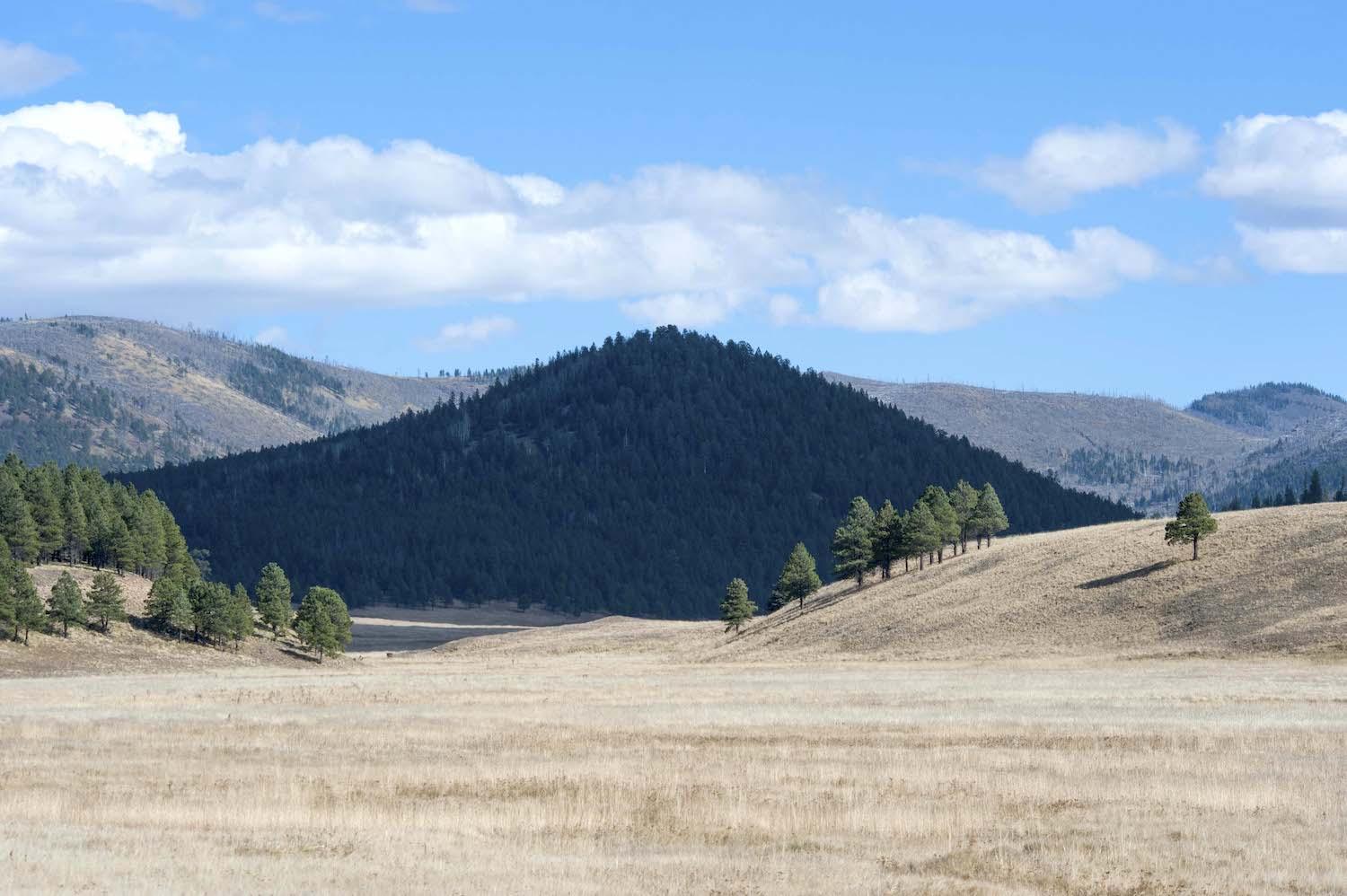
Valle Grande at Valles Caldera National Preserve/Patrick Cone
National Park Service plans for managing visitation at Valles Caldera National Preserve in New Mexico are being questioned by an outside organization that advocates for sustainable preservation of the nealy 89,000-acre park.
Last October the Park Service proposed to make the Preserve's Cabin District more accessible to people with disabilities and facilitate visitors accessing this area without the need for a backcountry vehicle permit as is currently the case. The agency also has been considering the creation of two parking areas near the district, improvements to buildings to make them accessible to people with disabilities, the addition of new trails for public and administrative use in and around the Cabin District, an automatic gate that does not require visitors to get out of their vehicle to open and close, subsurface utility installation to existing historic and non-historic buildings, and trailhead kiosks at existing trails which would provide better information to visitors.
But the Caldera Action Board, in a letter raising questions about the Park Service's approach outlined in an environmental assessment, wonders about the environmental impacts to the Cabin District that would be created by "more cars, buses, and RVs seeking parking. There is limited parking for these at the Cabin District currently."
Will there be additional parking created at the Cabin District, asked the board, and does the Preserve staff have "landscape architects and engineers ready to quickly create parking in a truncated schedule to be ready by spring 2023?"

The Park Service is proposing to increase parking at the Cabin District of Valles Caldera/Patrick Cone file
The board also noted that the final Environmental Assessment that lays out this and other changes to accessing the Preserve has not been made public.
"Normally these documents are released well in advance of ground disturbing work with the agency responding to public comments. It appears that the NEPA process may not have time to run its normal course before this spring," wrote the board.
The Traveler twice in recent weeks has reached out to Preserve Superintendent Jorge Silva-Banuelos, as well as Kate Hammond, the acting director of Park Service Region 7, the old Intermountain Region, to discuss the agency's vision for Valles Caldera but has received no reply from either official.
In its letter to Preserve officials, the board also questioned the limited visitor access to the Preserve. Under current operations, just 35 vehicles a day are allowed to drive through the Preserve.
"A large part of the mission of Caldera Action is enhancing public access to the VCNP. We recognize that these lands belong to the American public, including the tribes, and that the public has a right to access their lands within the protective guidelines of the NPS Director’s Management Policies and the best judgement of the VCNP staff," the group wrote. "We are aware that the public can have many excellent experiences in the front country of the Valles Caldera. However, the public should not be blocked from seeing the backcountry of the VCNP unless there are compelling reasons to do so and based on a publicly available decision process.
"Under the current system, the public may arrive at the VCNP between May 15 to November 15 and get a permit to drive beyond the Entrance Station if there are permits available. Under the new system, most permits will be reserved on recreation.gov and few will be available for spontaneous visitors, those without access to a computer, or those who don’t know about the permit system," it added.
Beyond that issue, the group also questioned why the Preserve is only open from 9 a.m. to 5 p.m. daily, a schedule that "significantly restricts public access to the Preserve."
"The public should be able to access the Preserve in all daylight hours to carry out legal activities of their choice. Fishermen and women prefer to fish in the early morning and the evening for example. Photographers prefer the shoulder hours of the day," wrote the board. "People wanting to take a long walk or bicycle ride are restricted by the late opening hour and the early closure. We feel strongly that the VCNP gate should be open dawn to dusk with opportunities for night sky viewing and eventual camping. Other NPS National Preserves are open 24/7. While we don’t support this system for the VCNP, it does provide a contrast to narrow hours at the VCNP."
The Caldera Action Board also questioned why the Preserve's backcountry, which is crisscrossed by old logging roads, is closed to vehicles for much of the year.
"We would like to understand the rationale for having the backcountry open to motor vehicles for only half the year, regardless of road conditions. The public will support management decisions if managers are transparent with their rationale," the group said.

 Support Essential Coverage of Essential Places
Support Essential Coverage of Essential Places



